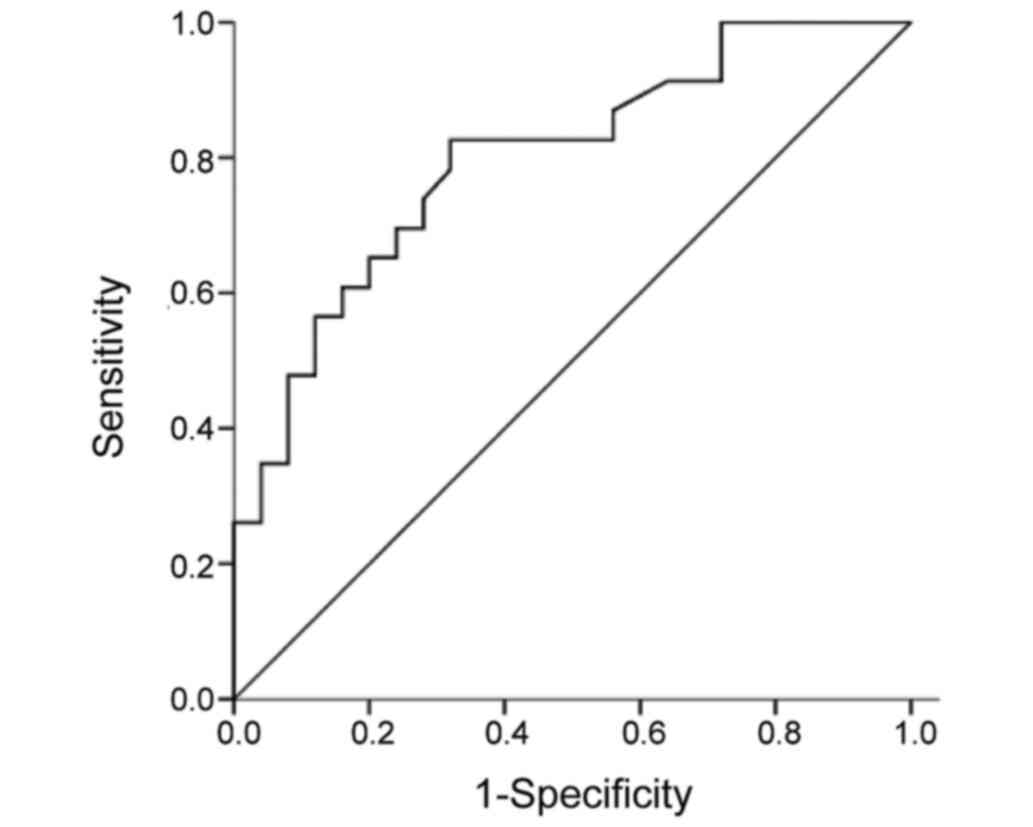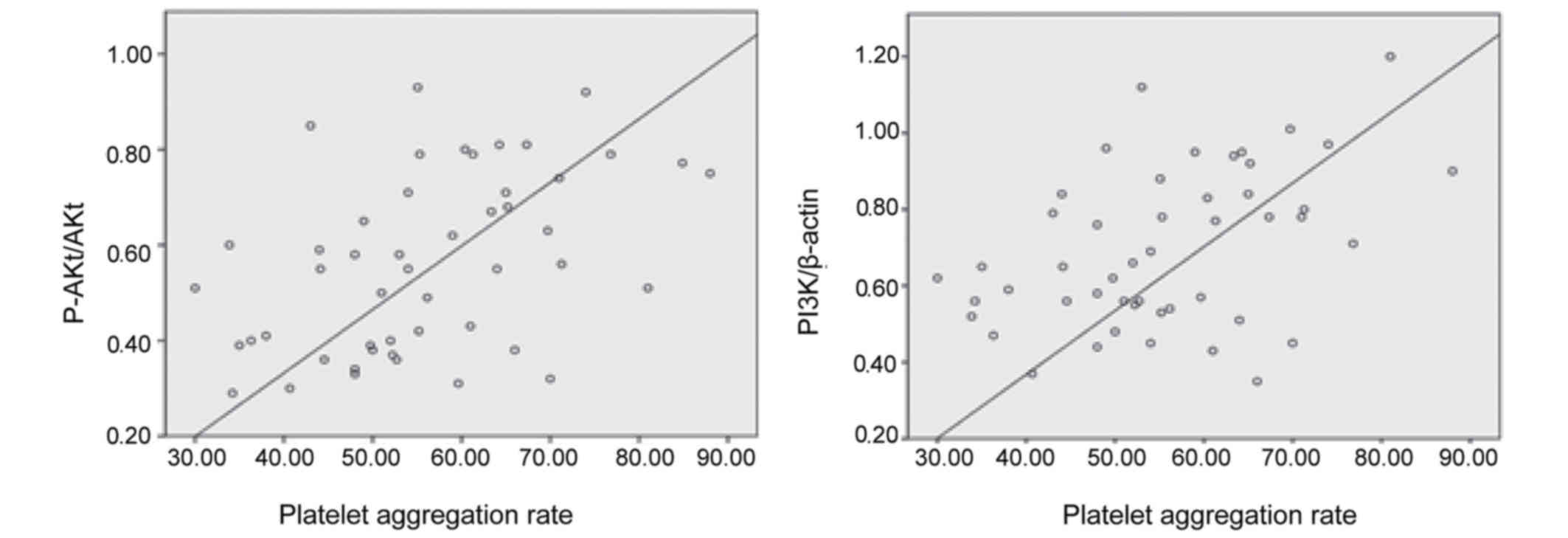|
1
|
Parunov LA, Soshitova NP, Ovanesov MV,
Panteleev MA and Serebriyskiy II: Epidemiology of venous
thromboembolism (VTE) associated with pregnancy. Birth Defects Res
C Embryo Today. 105:167–184. 2015. View Article : Google Scholar : PubMed/NCBI
|
|
2
|
Skuterud Wik H, Jacobsen Flem A and Morten
Sandset P: Long-term outcome after pregnancy-related venous
thrombosis. Thromb Res. 135:1–4. 2015. View Article : Google Scholar : PubMed/NCBI
|
|
3
|
Shifrin MM and Widmar SB: Platelet
inhibitors. Nurs Clin North Am. 51:29–43. 2016. View Article : Google Scholar : PubMed/NCBI
|
|
4
|
Kim SD, Lee YJ, Baik JS, Han JY, Lee CG,
Heo K, Park YS, Kim JS, Ji HD, Park SI, et al: Baicalein inhibits
agonist-and tumor cell-induced platelet aggregation while
suppressing pulmonary tumor metastasis via cAMP-mediated VASP
phosphorylation along with impaired MAPKs and PI3K-Akt activation.
Biochem Pharmacol. 92:251–265. 2014. View Article : Google Scholar : PubMed/NCBI
|
|
5
|
Min SH and Abrams CS: Membrane grease
eases platelet maturation. Blood. 126:1055–1056. 2015. View Article : Google Scholar : PubMed/NCBI
|
|
6
|
Buller HR, Sohne M and Middeldorp S:
Treatment of venous thromboembolism. J Thromb Haemost. 3:1554–1560.
2005. View Article : Google Scholar : PubMed/NCBI
|
|
7
|
Konkle BA: Diagnosis and management of
thrombosis in pregnancy. Birth Defects Res C Embryo Today.
105:185–189. 2015. View Article : Google Scholar : PubMed/NCBI
|
|
8
|
Parent F, Jovan R and des Francs Colas V:
Venous thromboembolism during pregnancy. Rev Prat. 65:188–192.
2015.(In French). PubMed/NCBI
|
|
9
|
Chen Y, Wang Y, Xie Z, Ming X, Li Z and
Kong Y: A tryptophan derivative TD-26 attenuates thrombus formation
by inhibiting both PI3K/Akt signaling and binding of fibrinogen to
integrin αIIbβ3. Biochem Biophys Res Commun. 465:516–522. 2015.
View Article : Google Scholar : PubMed/NCBI
|
|
10
|
Singhal R, Annarapu GK, Pandey A, Chawla
S, Ojha A, Gupta A, Cruz MA, Seth T and Guchhait P: Hemoglobin
interaction with GP1bα induces platelet activation and apoptosis: A
novel mechanism associated with intravascular hemolysis.
Haematologica. 100:1526–1533. 2015. View Article : Google Scholar : PubMed/NCBI
|
|
11
|
Lopes-Pires ME, Naime AC, Cardelli Almeida
NJ, Anjos DJ, Antunes E and Marcondes S: PKC and AKT modulate
cGMP/PKG signaling pathway on platelet aggregation in experimental
sepsis. PLoS One. 10:e01379012015. View Article : Google Scholar : PubMed/NCBI
|
|
12
|
Clark GD: Platelet-activating factor
acetylhydrolase and brain development. Enzymes. 38:37–42. 2015.
View Article : Google Scholar : PubMed/NCBI
|
|
13
|
Kuriyama N, Mizuno T, Yasuike H, Matsuno
H, Kawashita E, Tamura A, Ozaki E, Matsui D, Watanabe I, Koyama T,
et al: CD62-mediated activation of platelets in cerebral white
matter lesions in patients with cognitive decline. Arch Gerontol
Geriatr. 62:118–124. 2016. View Article : Google Scholar : PubMed/NCBI
|
|
14
|
Pósfai É, Marton I, Kotosz B and Borbényi
Z: Contribution of cardiovascular risk factors in the thrombotic
complications of essential thrombocythaemia: A Hungarian
single-institute retrospective analysis. Eur Rev Med Pharmacol Sci.
19:1258–1263. 2015.PubMed/NCBI
|
|
15
|
Signorelli SS, Ferrante M, Gaudio A and
Fiore V: Deep vein thrombosis related to environment (Review). Mol
Med Rep. 15:3445–3448. 2017. View Article : Google Scholar : PubMed/NCBI
|
|
16
|
Gerdsen F, Weber M, Langer F, Eifrig B and
Lindhoff-Last E: Platelet activation markers in patients with
venous thromboembolism without predisposing factors. Pathophysiol
Haemost Thromb. 34:1–5. 2005. View Article : Google Scholar : PubMed/NCBI
|
|
17
|
Malaponte G, Signorelli SS, Bevelacqua V,
Polesel J, Taborelli M, Guarneri C, Fenga C, Umezawa K and Libra M:
Increased levels of NF-kB-dependent markers in cancer-associated
deep venous thrombosis. PLoS One. 10:e01324962015. View Article : Google Scholar : PubMed/NCBI
|
|
18
|
Mu FT, Cranmer SL, Andrews RK and Berndt
MC: Functional association of phosphoinositide-3-kinase with
platelet glycoprotein Ibalpha, the major ligand-binding subunit of
the glycoprotein Ib-IX-V complex. J Thromb Haemost. 8:324–330.
2010. View Article : Google Scholar : PubMed/NCBI
|
|
19
|
Kim S, Mangin P, Dangelmaier C, Lillian R,
Jackson SP, Daniel JL and Kunapuli SP: Role of phosphoinositide
3-kinase beta in glycoprotein VI-mediated Akt activation in
platelets. J Biol Chem. 284:33763–33772. 2009. View Article : Google Scholar : PubMed/NCBI
|
|
20
|
Kim TH, Kim HM, Park SW and Jung YS:
Inhibitory effects of yuzu and its components on human platelet
aggregation. Biomol Ther (Seoul). 23:149–155. 2015. View Article : Google Scholar : PubMed/NCBI
|
|
21
|
Hao HZ, He AD, Wang DC, Yin Z, Zhou YJ,
Liu G, Liang ML, Da XW, Yao GQ, Xie W, et al: Antiplatelet activity
of loureirin A by attenuating Akt phosphorylation: In vitro
studies. Eur J Pharmacol. 746:63–69. 2015. View Article : Google Scholar : PubMed/NCBI
|

















